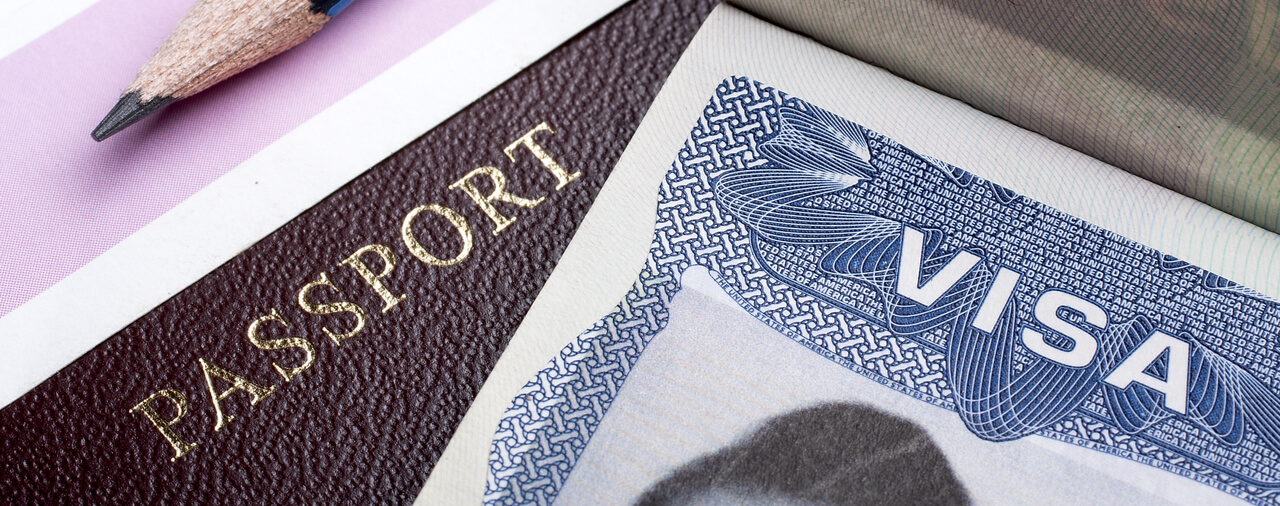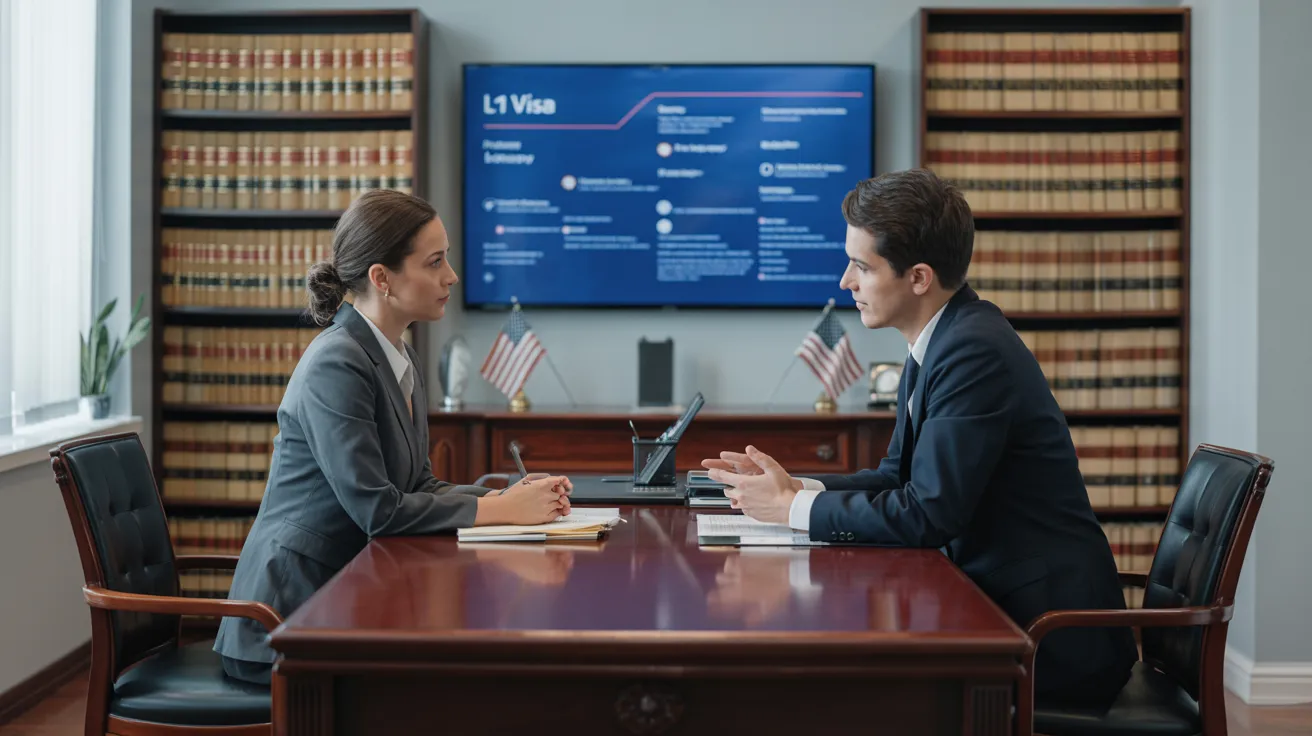Whatever You Required to Know Concerning the L1 Visa: Benefits, Needs, and Extra
The L1 Visa offers as a critical device for international business looking for to transfer staff members to the USA, helping with both functional efficiency and the transfer of specialized understanding. With distinct classifications for executives and specialized professionals, this visa offers various benefits, consisting of prospective paths to irreversible residency. Nevertheless, understanding the eligibility requirements and application procedure is vital for an effective shift. As we check out the intricacies of the L1 Visa, it becomes clear that navigating its complexities is critical for companies intending to leverage worldwide talent efficiently. What obstacles might you experience along the road?
Summary of the L1 Visa

Kinds Of L1 Visas

Several sorts of L1 visas satisfy the diverse demands of multinational business wanting to transfer employees to the United States. The 2 primary categories of L1 visas are L1A and L1B, each created for certain functions and responsibilities within an organization. L1 Visa.The L1A visa is intended for managers and execs. This classification permits business to transfer individuals that hold managerial or executive placements, enabling them to manage procedures in the U.S. This visa stands for a first duration of approximately three years, with the opportunity of extensions for a total amount of approximately seven years. The L1A visa is especially useful for business seeking to develop a strong management presence in the united state market.On the other hand, the L1B visa is designated for staff members with specialized expertise. This includes individuals who have advanced competence in certain areas, such as proprietary innovations or distinct processes within the firm. The L1B visa is also valid for a preliminary three-year duration, with expansions readily available for approximately five years. This visa group is suitable for firms that call for staff members with specialized skills to boost their procedures and maintain an one-upmanship in the U.S.Both L1A and L1B visas permit dual intent, meaning that visa holders can use for permanent residency while on the visa. Understanding the differences in between these two categories is necessary for services intending to browse the complexities of employee transfers to the USA successfully
Qualification Demands
To receive an L1 visa, both the employer and the staff member should meet details qualification requirements established by united state migration authorities. The L1 visa is created for intra-company transferees, enabling multinational firms to move staff members to their united state offices.First, the company should be a qualifying company, which means it should have a parent company, branch, subsidiary, or affiliate that is operating both in the U.S. and in the international country. This connection is essential for showing that the staff member is being moved within the exact same company structure. The company has to likewise have been doing company for at the very least one year in both locations.Second, the worker should have been employed by the foreign company for at the very least one continuous year within the three years preceding the application. This work needs to remain in a supervisory, exec, or specialized knowledge capacity. For L1A visas, which accommodate managers and execs, the worker should show that they will certainly remain to run in a similar capacity in the U.S. For L1B visas, meant for staff members with specialized understanding, the individual need to have distinct competence that adds considerably to the company's procedures.
Application Process
Maneuvering the application process for an L1 visa entails a number of important actions that have to be completed properly to ensure an effective result. The initial step is to identify the proper group of the L1 visa: L1A for managers and execs, or L1B for employees with specialized understanding. This difference is substantial, as it influences the documentation required.Once the group is identified, the U.S. employer should submit Kind I-129, Application for a Nonimmigrant Employee. This form ought to consist of in-depth details regarding the firm, the employee's duty, and the nature of the job to be performed in the U.S. Accompanying documentation commonly consists of proof of the partnership between the U.S. and foreign entities, evidence of the worker's credentials, and information regarding the job offer.After entry, the united state Citizenship and Immigration Services (USCIS) will evaluate the petition. If authorized, the employee will be informed, and they can after that apply for the visa at a united state consular office or consular office in their home country. This entails finishing Kind DS-160, the Online Nonimmigrant copyright, and scheduling an interview.During the interview, the applicant must provide numerous documents, including the authorized Form I-129, evidence of work, and any additional sustaining evidence. Following the meeting, if the visa is given, the staff member will certainly receive a visa stamp in their ticket, permitting them to get in the united state to work for the funding employer. Proper preparation and detailed paperwork are essential to navigating this procedure efficiently.
Advantages of the L1 Visa
One of the remarkable advantages of the L1 visa is its ability to promote the transfer of crucial workers from global workplaces to the United States. This visa is especially helpful for international firms seeking to preserve uniformity in procedures and leadership throughout boundaries. By allowing execs, supervisors, and specialized employees to operate in the U.S., companies can ensure that their most crucial ability is available to drive organization objectives.Another considerable benefit of the L1 visa is its fairly simple application process compared to other work visas. Organizations can request for the L1 visa without the demand for a labor accreditation, which improves the employment of foreign workers. The visa can be approved for a first duration of up to three years, with the opportunity of expansions, facilitating lasting assignments.The L1 visa also offers a course to long-term residency. Workers on L1A visas (for managers and execs) can make an application for a Permit after one year, quickening their change to long-term status. This function is an attractive reward for gifted people looking for security in the united state workforce.Additionally, L1 visa owners can bring their prompt family participants to the U.S. under L2 status, allowing spouses and kids to stay and study in the nation, enhancing the general charm of this visa category. Overall, the L1 visa functions as a necessary device for international organizations, cultivating cross-border partnership and talent flexibility.
Common Challenges
While the L1 visa supplies many benefits for international business and their employees, it is not without its difficulties. One significant obstacle is the rigid documentation and eligibility demands enforced by the U.S. Citizenship and Immigration Solutions (USCIS) Business should supply comprehensive proof of the foreign worker's qualifications, the nature of business, and the certifying partnership between the united state and international entities. This process can be lengthy and might require legal competence to browse successfully.Another difficulty is the potential for analysis during the petition process. USCIS officers may examine the authenticity of the business procedures or the staff member's role within the organization. This examination can bring about hold-ups or even rejections of the copyright, which can considerably affect the firm's operational plans and the employee's job trajectory.Furthermore, the L1 visa is connected to the funding company, which means that job adjustments can make complex the visa condition. If an L1 visa holder wishes to change employers, they should typically seek a different visa group, which can include intricacy to their immigration journey.Lastly, maintaining conformity with L1 visa regulations is crucial. Employers must ensure that their staff member's duty straightens with the initial request L1 Visa which business remains to fulfill the qualification demands. Failure to do so can cause revocation of the visa, influencing both the worker and the company. These difficulties require comprehensive preparation and ongoing administration to assure an effective L1 visa experience.
Tips for Success
To effectively navigate the L1 visa procedure, thorough preparation is vital. Begin by extensively recognizing the specific requirements for the L1 visa category you are obtaining, whether L1A for supervisors and executives or L1B for workers with specialized knowledge. Collect all necessary paperwork early at the same time, including proof of your work history, organizational framework, and the nature of business operations.Engage legal advise experienced in immigration law to guide you through the intricacies of the application. A lawyer can assist guarantee that your application is full, accurate, and compelling. They can likewise help in preparing for possible demands for proof (RFEs) by proactively attending to locations that may raise questions.Additionally, preserve clear interaction with your company, who must offer crucial assistance for your application. L1 Visa. Verify that they understand their duties, consisting of filing the needed applications and offering documents that corroborates your duty in the organization.Prepare for the visa meeting by practicing responses to typical concerns concerning your professional background and the nature of your employment. Demonstrating self-confidence and quality can greatly influence the outcome of your application
Regularly Asked Concerns
Can Family Members Accompany L1 Visa Holders?
Yes, relative can accompany L1 visa holders. Partners and unmarried children under 21 years of ages are qualified for L2 visas, which allow them to live and examine in the United States during the L1 holder's remain.
How Much Time Can L1 Visa Owners Stay in the united state?
L1 visa holders can originally remain in the U.S. for as much as 3 years (L1 Visa). This duration might be extended, allowing a maximum keep of 7 years for L1A visa owners and 5 years for L1B visa holders
Is the L1 Visa a Twin Intent Visa?

Can L1 Visa Holders Get a Permit?
Yes, L1 visa holders can get a copyright - L1 Visa Lawyer. The L1 visa supports twin intent, permitting owners to go after permanent residency while preserving their non-immigrant status, assisting in a smoother transition to a permit
What Takes place if an L1 copyright Is Refuted?
If an L1 copyright is denied, the applicant may get a notice laying out the reasons for rejection. L1 Visa. They can appeal the decision, reapply, or explore alternate visa options depending upon their scenarios and qualifications
Verdict
In recap, the L1 Visa functions as a vital tool for multinational business seeking to move staff members to the USA. Comprehending the distinctions in between L1A and L1B categories, together with the eligibility needs and application procedures, is crucial for successful navigating of this non-immigrant classification. The advantages provided, including structured applications and pathways to long-term residency, even more boost its allure. Resolving usual challenges effectively can result in a more positive result in the copyright procedure.